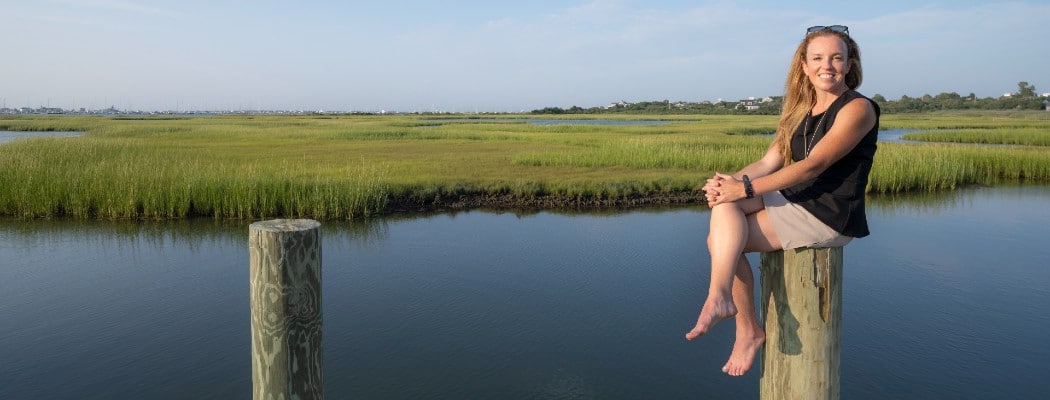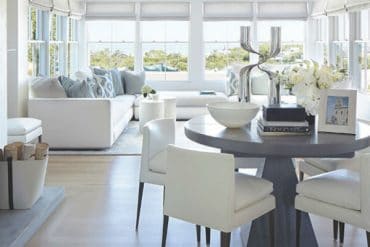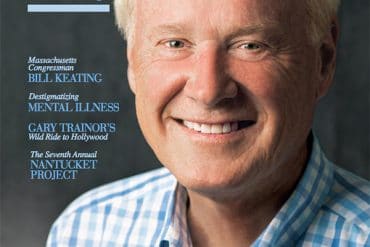The Land Bank’s new executive director Jesse Bell gives her first official interview.
This spring, the Nantucket Land Bank’s longtime executive director Eric Savetsky announced his retirement after more than twenty years in his post. Succeeding Savetsky is Jesse Bell, a licensed Massachusetts attorney with a Master of Studies in Environmental Law who has worked her way up the organization from assistant administrator to assistant director. Bell now takes the helm at a time when the Land Bank is arguably at its most formidable, supercharged by the unprecedented real estate boom over the last few years. However, she also faces uncharted waters ahead as the debate over affordable housing has put new pressures on the Land Bank. An avid runner who can often be found jogging through Land Bank properties early in the morning, Bell is taking her new responsibilities in stride. She caught up with N Magazine to share her vision for the future of this important island organization.
You worked closely with Eric Savetsky for a number of years; how do you think your approach will be different than his?
The challenge we faced in the months leading up to Town Meeting this year made me realize that we need to do a better job communicating everything the Land Bank does for the island to the residents. It spurred us to develop a more robust social media presence, revive our quarterly newsletter and place a series of ads reinforcing our mission in the print media. The way people consume information has changed dramatically over the last twenty years. The previous thinking was that it was better to keep a low profile and try not to share the public stage with other local nonprofits who are out there trying to fundraise. But what keeps the Land Bank alive is community support, and everything we do is for community benefit, so it’s important that we keep people engaged and informed. I think you will see a more proactive community outreach effort from the Land Bank going forward.
What are your priorities moving forward? More waterfront versus open acreage?
Waterfront has always been a high priority for the Land Bank, but now with the unprecedented numbers of visitors we are experiencing, expanding public beach and pond access is more important than ever. There are also some key inland conservation parcels that are ecologically important to acquire. Some properties are best left alone for habitat preservation, but there are also environmental benefits to making pedestrian and bike travel easier so people are less reliant on cars. I’m interested in providing greater trail connectivity or “greenways” in places where it makes sense. Overall, balance is the name of the game. We strive to achieve a balance between nature and human activity in our approach to every new project or in the development of management plans for Land Bank properties.
What role do you think the Land Bank can play in addressing the dire housing problem on the island and how do you foresee collaborating with housing advocates?
We made a real effort during this community debate to ensure everyone knew that we are also concerned about affordable housing. It’s touched all of us in one way or another. However, it is important to avoid pitting the public goals of creating affordable housing and open space protection against one another. We should strive to be working collaboratively to benefit all residents of the island.
We have tried hard to assist where we can while staying within the bounds of our mission and enabling legislation. Specifically, the Land Bank Commission voted not to charge a fee on the sale of homes that are restricted as affordable, and for market-rate homes, last year they increased our first-time homebuyer exemption for local residents from $600,000 to $850,000. We also routinely offer any surplus houses and any of their interior contents for free to affordable housing organizations.
As an island we need to come at this problem from multiple angles. I’m committed to sitting down with affordable housing advocates to explore potential collaborations, either through a joint acquisition that serves both our missions or through other mutually beneficial opportunities. However, it’s going to require more than what the Land Bank can offer to make real progress.
In recent years, the Land Bank has purchased houses—like on Washington Street—and razed them to create open green space. What goes into those decisions and do you foresee taking similar action on other properties down the line? If so, where?
With every new property we consider, we review the structures on the property and think about what we would do with them. We consider factors such as whether they are historic, whether they can be used for employee housing, or whether they could be offered to affordable housing interests, etc. Generally, we try not to purchase properties with structures on them in the first place, but then there are amazing properties we make an exception for, or those that provide a valuable linkage that we need, so in some cases it’s unavoidable. We are also paying close attention to the town’s coastal resiliency planning discussions. It will be interesting to see if they identify certain areas of the island that would be better off without development. Removing impervious surfaces and structures generally increases flood absorption capacity, so flood modeling projections should theoretically identify vulnerable areas that would benefit from undevelopment. That will be a new, interesting data point for the commission to consider in their acquisition discussions.
As the Land Bank acquires more and more land, it is forcing greater housing density in the land that remains. Do you have any thoughts on the island’s density increase?
I don’t think the Land Bank is forcing greater density in the land that remains by continuing to acquire land. The majority of the land we are looking to buy is not land that is suitable for high-density development. However, I think there is also a case to be made that adding a little bit of open space here and there in high-density areas helps maintain the aesthetic character of the island and gives people a little breathing room in year-round neighborhoods. With all the development we’ve seen in recent years, the Land Bank is such an important, balancing factor—key to maintaining the quality of life we all enjoy.
Given the unprecedented boom of the real estate market— having already surpassed a billion dollars in sales—the Land Bank’s coffers must be full. Can you give us a sense of what your war chest looks like right now and what that’s going to enable the Land Bank to do?
The Land Bank currently has about $44 million in unrestricted funds right now, but $32 million of that has already been committed to upcoming and pending acquisitions. Skyrocketing real estate prices have made our revenue stronger than ever, but properties we’re interested in purchasing are equally at an all-time high and being snapped up quickly. That is the beauty of the Land Bank funding formula—it increases and decreases in direct proportion to the strength of the real estate development market pressures and cycles. We currently have two waterfront acquisitions in the pipeline and a few more that will enhance existing properties. We also have projects in the queue that are in various stages of planning and permitting that hopefully we will be able to execute in the near future.
The Land Bank is in a plum position to execute its vision. What transformative projects do you envision in the coming years? What are some of the key projects on the immediate horizon?
We still have some punch list items for the Easy Street Park that will be completed in September. Soon we will also open the park overlooking the creeks by the rotary, as well as the dog park on the corner of Surfside and Miacomet roads. These parks will be accessible to people of all ages and abilities, create new vista opportunities and result in transformative community spaces for the island. We also are putting the finishing touches on the coast-to-coast trail, which can be followed on the ACKTrails app, and a paper map is currently in design.
After that, key projects on the immediate horizon are: (1) Phragmites eradication at Consue Springs, which will open up views of the harbor from Orange Street; (2) an accessible dock on Long Pond; and (3) an ecological restoration of the Lily Pond. Other than that, we will be expanding trail connectivity, increasing opportunities for local agriculture and exploring how waterfront parks can improve resiliency while also providing areas for public recreation.
Some have asked the question: When will it be enough? When will the Land Bank have fulfilled its mission of protecting enough land for the future of the island? What boxes still need to be checked for that determination to be made?
I don’t think of the Land Bank as a static organization. There has been and will continue to be a gradual evolution to it, which makes sense since we are designed to respond to the needs of the community and those needs clearly change over time. We have evolved from where we were thirty years ago. At its heart, the Land Bank is a planning agency with a focused mission, but we do so much more than just protect land. We also provide ecological stewardship of that land, create new outdoor recreational opportunities for everyone, and are actively expanding our agricultural footprint, which will result in more fresh food for the island. We are still preserving critical conservation parcels, but we are also building parks that are integral and accessible spaces for community interaction amongst diverse segments of our population. These are places where people socialize with their neighbors, take in the view, have a cup of coffee, watch their children or dogs play, etc. As our population continues to grow, we should continue to add these open space resources. In addition, we are all learning about the urgent need for climate resiliency strategies to protect the island. What exactly the Land Bank’s future role will be in this all-in effort is still a work in progress, but we know it will become more important in the years ahead.









